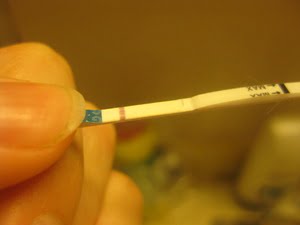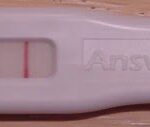For women who have used charting and fertility monitoring to get pregnant before, ovulation tests are nothing new. An ovulation test can be used to help pinpoint when a woman will ovulate by detecting a surge of a specific hormone in the woman’s body. By pinpointing ovulation, women are able to have intercourse at the time that is most likely to result in pregnancy.
How do ovulation tests work?
Ovulation tests are nearly identical to home pregnancy tests. Just like a pregnancy test, the absorbent end of the test is dipped into a urine specimen (or held midstream during urination depending on the test format) and is then allowed to sit for the specified amount of time before the result is read. There are two main differences between ovulation tests and pregnancy tests: the hormone the test is meant to detect and the way the results are read.
A pregnancy test is meant to detect human chorionic gonadotropin (hCG), a hormone only present in the body when pregnant. An ovulation test is meant to detect lutenizing hormone (LH), which is released into the woman’s body at peak levels 24-48 hours before ovulation.
A pregnancy test is positive if there are two lines visible in the results window and negative if there is only one line visible. An ovulation test, however, is read quite differently. An ovulation test is only positive if the test line is as dark or darker than the control line on the test. All other results, even if there are two lines, are considered negative.
Using ovulation tests to prevent pregnancy
Most health care professionals, websites, books, and test companies advise against using ovulation tests as a way to prevent pregnancy. There are many issues that make ovulation tests a bad form of contraceptive, the main one relating to the lifespan of sperm. Sperm can live in the female body for three to five days, sometimes longer.
An ovulation test is only able to pick up the surge of lutenizing hormone 24-48 hours before ovulation should occur. If a woman has sex after getting a negative result, then gets a positive result the following day, she can expect to ovulate within 24-48 hours. This puts her ovulation within two to three days of when she last had intercourse. Considering the lifespan of sperm within the female body, she could very well become pregnant despite having monitored her ovulation using the test.
Ovulation tests are better used as a contraceptive aid
Although ovulation tests aren’t a reliable form of contraceptive, they can be used as a contraceptive aid. When a woman desires to use natural birth control methods or avoid birth control pills, it is a good idea for her to become as familiar with her cycle as possible. This includes charting her basal body temperature and observing cervical mucous to determine when ovulation should occur.
She may find it beneficial to use ovulation tests for several months to help her become more familiar with her ovulatory cycles. Using an ovulation test in addition to charting and observing mucous will help her better determine when she ovulates.
Always use backup birth control when observing cycles
It takes time and diligent observation for a woman to understand her cycles and what her “norm” is. It is very important that if pregnancy is not desired she always use some form of backup birth control, such as condoms or a diaphragm for the first several months. Hormonal birth controls and IUDs are not ideal as they will alter a woman’s natural cycle and the information gathered might be useless once she discontinues that form of birth control.





